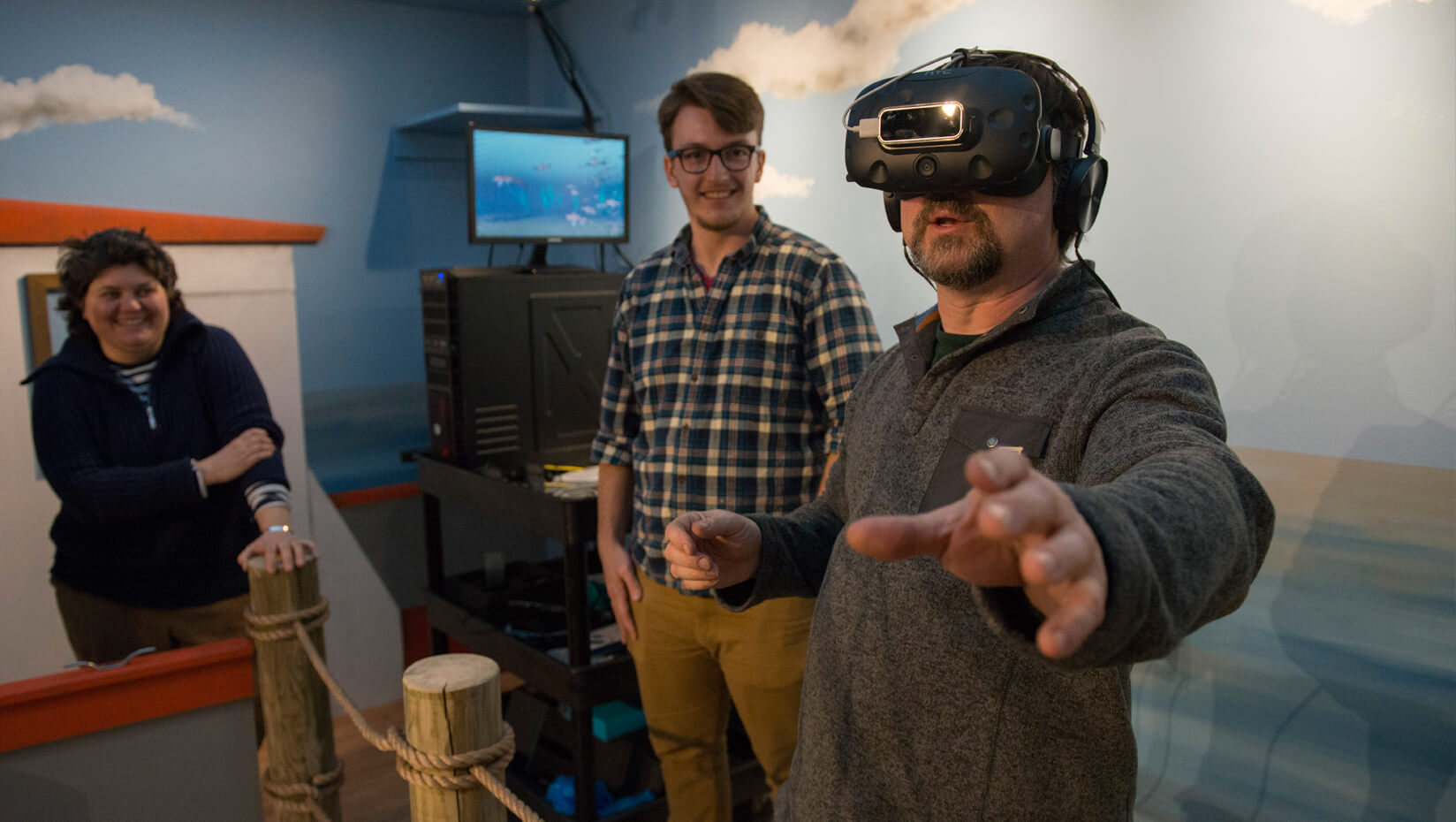
Making a Big Splash: Interactive exhibit at Maine Discovery Museum brings sea farming to life
The University of Maine’s Aquaculture Research Institute and Maine EPSCoR Sustainable Ecological Aquaculture Network (SEANET) program provided support for the first dedicated interactive aquaculture exhibit in the country.
“It’s perfect timing,” says Trudi Plummer, the museum’s director of education. “Kids can learn and play and begin thinking about sea farming as a potential career for their future.”
Planning for the exhibit — “Sea What Grows Aqua Farms” — has taken the better part of a year. But with the help of local business owners, including mural artist Chez Cherry and carpenter Mike Weston, Plummer has made fast progress on readying the exhibit for its public opening Saturday, Feb. 4.
“The exhibit is in a relatively small space, but thrives within its own room,” says Plummer.
There’s a working waterfront atrium with boat murals and a computer projection of salmon farms on the surrounding walls. There’s also a virtual reality component that visitors can operate with staff supervision and guidance at specific, pre-designated, times.
February will be devoted to “Big Splash” special events, including crafts, book readings, touch tank presentations and a weeklong “Big Splash” vacation camp. Check the museum calendar for dates and times.
“We hope people leave the museum knowing that aquaculture is important and growing in Maine, and that the aquaculture industry offers real careers which require STEM knowledge. I also want people to remember that aquaculture farms depend on the health of the ocean,” says Plummer, who is passionate about environmental health.
UMaine senior Eric Morrison, a new media student from York, Maine, developed the exhibit’s interactive component.
“Virtual reality offers kids a unique learning opportunity that aids in remembering the experience and gaining knowledge in a new and exciting way,” he says.
The interactive virtual reality component offers guests the chance to learn about sustainable aquaculture along Maine’s coastline and, with headsets, experience an underwater environment that includes schools of fish.
Plummer says the timing of the exhibit is perfect — given the growth of the aquaculture industry in Maine and the need for greater attention to and recognition of climate change issues.
“We hope to connect to sustainability, and the deeper concept that is our responsibility with, and in, nature,” she says.
Plummer hopes the exhibit will pave the way toward an expansion throughout the museum’s first floor.
EPSCoR stands for the Experimental Program to Stimulate Competitive Research. It is a federal program directed at states that have historically received smaller portions of federal research and development funding. EPSCoR develops partnerships between their higher education institutions, industry, government, and others to effect lasting improvements in research capacity, innovation, and economic development. For more information see www.umaine.edu/epscor/
The mission of the Maine Discovery Museum is to educate children and families, encourage creativity, nurture a sense of wonder and to challenge all to learn in new and innovative ways. Exhibits and programs will be fun, interactive and thought provoking, and encourage participation by children and families of all abilities and socioeconomic backgrounds. As a unique community resource, the museum will provide opportunities for exploration and discovery that incorporate aspects of Maine into a greater understanding of the world in which we live. For more information visit: https://www.mainediscoverymuseum.org/
